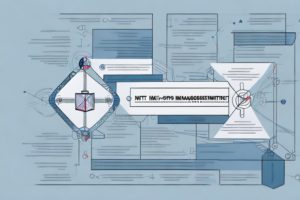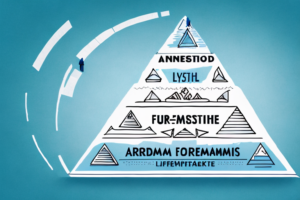What is system security officer role in RMF?

A computer system with a shield around it
If you’re working in the field of information technology, you’re likely aware of the critical role that risk management plays in protecting sensitive information and systems. One important component of risk management is the Risk Management Framework (RMF), which outlines a structured approach to identifying, assessing, and managing risks within an information system. At the heart of the RMF process is the System Security Officer (SSO), who plays a crucial role in ensuring the security of an organization’s information assets.
Understanding the basics of the Risk Management Framework (RMF)
The Risk Management Framework is a methodology designed to help organizations manage and mitigate risks to their information systems. The framework was developed by the National Institute of Standards and Technology (NIST) to help government agencies and private organizations protect their information assets from a wide range of threats that could include cyber attacks, natural disasters, and human error. The framework consists of several steps, including:
- Initiating the RMF process
- Categorizing Information Systems
- Selecting Security Controls
- Implementing Security Controls
- Assessing Security Controls
- Auditing Security Controls
- Maintaining Security Controls
One of the key benefits of using the RMF is that it provides a structured and repeatable process for managing risks to information systems. This can help organizations to identify and prioritize risks, and to implement appropriate controls to mitigate those risks. By following the steps outlined in the framework, organizations can ensure that their information systems are secure and resilient, and that they are able to continue operating even in the face of unexpected threats or disruptions.
What are the key responsibilities of a System Security Officer (SSO)?
The System Security Officer (SSO) is responsible for managing the security of an organization’s information systems throughout the RMF process. In particular, the SSO is tasked with ensuring that the system is configured and operated in a way that protects against unauthorized access and other potential threats. The specific responsibilities of an SSO may vary depending on the size and complexity of the organization, but typically include:
- Developing and implementing security policies and procedures
- Educating users on security best practices
- Conducting and overseeing security risk assessments
- Ensuring that security controls are properly implemented and maintained
- Monitoring and identifying security vulnerabilities and threats
- Reporting security incidents and breaches to management and other stakeholders
Another important responsibility of an SSO is to stay up-to-date with the latest security threats and trends. This involves researching and analyzing new security risks and vulnerabilities, as well as staying informed about emerging technologies and security solutions. The SSO must also be able to adapt and adjust security measures as needed to address new threats and protect against potential attacks.
In addition to technical skills, an SSO must also possess strong communication and leadership abilities. They must be able to effectively communicate security policies and procedures to all levels of the organization, and work collaboratively with other departments and stakeholders to ensure that security measures are properly implemented and maintained. The SSO must also be able to lead and manage a team of security professionals, providing guidance and support as needed to ensure that all security objectives are met.
The importance of having a designated SSO in the RMF process
Having a designated SSO is critical to the success of the RMF process. Without an SSO, there may be a lack of accountability for ensuring that appropriate security controls are implemented and maintained. Furthermore, having an SSO who is responsible for security-related tasks can enable other stakeholders to focus on their specific areas of expertise, which can increase efficiency and improve the overall security posture of the organization.
Another important reason for having a designated SSO in the RMF process is to ensure that security risks are identified and addressed in a timely manner. An SSO can monitor the security posture of the organization and identify potential vulnerabilities or threats. They can then work with other stakeholders to develop and implement appropriate security controls to mitigate these risks.
Additionally, having an SSO who is knowledgeable about the RMF process and security best practices can help to ensure that the organization is compliant with relevant regulations and standards. This can be particularly important for organizations that handle sensitive data or operate in highly regulated industries, such as healthcare or finance.
How SSOs work with other stakeholders to ensure successful information security
SSOs work closely with other stakeholders throughout the RMF process to ensure successful information security. These stakeholders may include system administrators, security engineers, auditors, and regulatory compliance professionals. By collaborating with these individuals, SSOs can ensure that security controls are properly implemented and maintained, risks are identified and addressed, and compliance requirements are met.
One of the key ways that SSOs work with other stakeholders is by conducting regular security assessments. These assessments help to identify vulnerabilities and potential threats to the system, and allow SSOs to work with other stakeholders to develop and implement effective security controls. Additionally, SSOs may work with system administrators and security engineers to monitor system logs and detect any suspicious activity that could indicate a security breach.
Another important aspect of SSOs’ collaboration with other stakeholders is ensuring that all personnel are properly trained in information security best practices. SSOs may work with HR departments to develop training programs and ensure that all employees receive regular security awareness training. By educating personnel on the importance of information security and how to properly handle sensitive data, SSOs can help to prevent security incidents and protect the organization’s assets.
The significance of SSOs in maintaining compliance with industry regulations and standards
Many organizations are subject to industry regulations and standards that dictate specific security requirements. For example, healthcare organizations are subject to the Health Insurance Portability and Accountability Act (HIPAA), which mandates certain security and privacy controls for protected health information. ISO/IEC 27001 is another industry standard that organizations may choose to comply with. SSOs play a critical role in helping organizations to achieve and maintain compliance with these regulations and standards by ensuring that adequate security controls are implemented and maintained.
The role of SSOs in developing and implementing security controls
SSOs are responsible for selecting, implementing, and maintaining appropriate security controls to protect against potential threats. This involves working with other stakeholders to identify potential security risks, selecting appropriate controls to mitigate those risks, and implementing those controls in a way that ensures their effectiveness. SSOs must also be vigilant in keeping up to date on new security threats and mitigation techniques, and adjusting security controls as necessary to address changing circumstances.
How SSOs identify and assess risks within their systems
Identifying and assessing risks is a critical component of the RMF process. SSOs are responsible for conducting risk assessments to identify potential security threats and vulnerabilities within their information systems. This involves evaluating various factors, such as the likelihood of a particular threat occurring and the potential impact of that threat if it does occur. Based on these assessments, SSOs can make informed decisions about which security controls to implement and how to prioritize their efforts.
Best practices for SSOs to mitigate risks and vulnerabilities in their systems
Effective risk management involves a combination of selecting appropriate security controls, taking proactive measures to prevent threats from occurring, and having a plan in place to respond to security incidents if they do occur. To help mitigate risks and vulnerabilities in their systems, SSOs should consider adopting the following best practices:
- Implementing multi-factor authentication for remote access
- Performing regular vulnerability scans
- Implementing a comprehensive incident response plan
- Providing regular security awareness training for all employees
- Regularly reviewing and updating security policies and procedures
How SSOs monitor, test, and evaluate security controls to ensure effectiveness
After security controls have been implemented, SSOs must continuously monitor and test them to ensure that they are functioning effectively and providing the necessary protection. This involves conducting periodic security assessments and audits, testing controls for vulnerabilities, and addressing any identified weaknesses. SSOs must be proactive in identifying potential security threats and taking steps to mitigate them before they can cause harm to the organization.
The challenges faced by SSOs and how to overcome them
SSOs face a range of challenges in ensuring the security of their organizations’ information assets. Some of the most significant challenges include keeping up with rapidly evolving security threats, ensuring compliance with industry regulations and standards, and effectively communicating security risks and recommendations to management. To overcome these challenges, SSOs should prioritize ongoing training and professional development, maintain open lines of communication with other stakeholders, and leverage industry best practices and emerging technologies to enhance their security capabilities.
The future of system security officers in RMF processes
The field of information security is rapidly evolving, and the role of the System Security Officer (SSO) is likely to evolve along with it. As new security threats emerge and technology continues to advance, SSOs will need to stay up to date on the latest best practices and tools for managing risk. Additionally, as organizations expand their use of cloud computing and other new technologies, SSOs will need to adapt to new security challenges and consider new approaches to risk management.
Conclusion: The critical role of System Security Officers in ensuring robust information security under RMF
The Risk Management Framework (RMF) is a critical tool for managing and mitigating risks to an organization’s information systems. At the heart of the RMF process is the System Security Officer (SSO), who plays a critical role in ensuring the security of an organization’s information assets. SSOs are responsible for identifying and mitigating potential security threats, maintaining compliance with industry regulations and standards, and ensuring the effectiveness of security controls. By working closely with other stakeholders and staying up to date on emerging trends and best practices, SSOs can help ensure that their organizations are protected against a wide range of threats.



